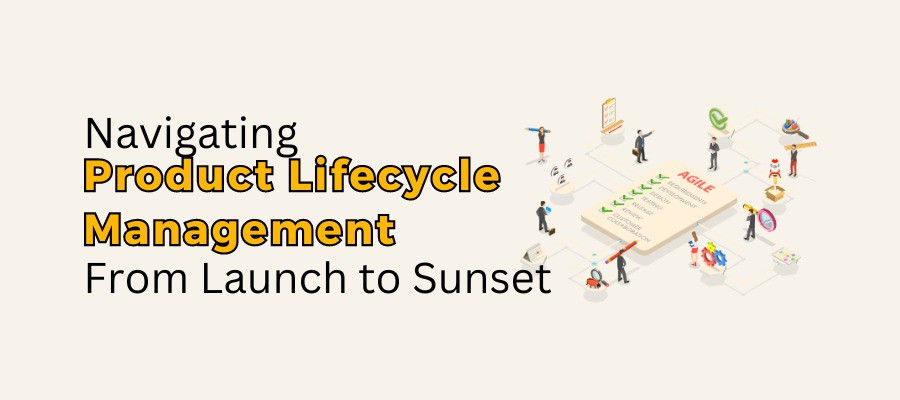Navigating Product Lifecycle Management: From Launch to Sunset

Product Lifecycle Management (PLM) is the cornerstone of successful product development and longevity. It’s a journey that starts with an idea and evolves through various stages, ultimately leading to the product’s retirement. Each stage demands careful attention and a unique approach to ensure the product thrives in a competitive market. Let's dive into the intricacies of PLM and explore how to navigate each stage effectively, from launch to sunset.
Ideation and Development: Laying the Foundation
Every great product begins with an idea. But transforming that idea into a tangible product requires a clear vision, thorough research, and meticulous planning. This stage is about understanding the market needs, defining the product’s purpose, and setting the groundwork for development.
- Market Research: Start by understanding the market landscape. Who are your competitors? What are the audiences’ pain points? Conducting thorough market research helps you identify gaps in the market and potential opportunities for your product.
- Product Vision: Once you understand the market clearly, define your vision. What problem does your product solve? How is it different from existing solutions? This vision will guide your development process and ensure all stakeholders are aligned.
- Prototype and MVP Development: Before fully committing to the development, create a prototype or Minimum Viable Product (MVP). This allows you to test your concept, gather feedback, and make necessary adjustments before investing significant resources.
Launch: Making a Strong Market Entry
Launching a product is one of the most critical phases in the product lifecycle. It’s your first opportunity to make an impression, and it’s crucial to get it right. A successful launch requires a well-thought-out strategy that covers everything from marketing to customer support.
- Go-to-Market Strategy: Your go-to-market strategy should outline how to introduce your product to the market. This includes defining your target audience, pricing strategy, and sales channels. Tailor your messaging to resonate with your audience and highlight the unique value of your product.
- Marketing and PR: Build excitement around your product launch through targeted marketing and public relations efforts. Utilize social media, content marketing, and influencer partnerships to generate buzz. A well-executed marketing campaign can attract early adopters.
- Customer Support: Ensure your customer support team is ready to handle inquiries and issues from day one. Providing exceptional customer service can turn your early customers into loyal advocates, helping to drive word-of-mouth referrals.
Growth and Maturity: Sustaining Momentum
After a successful launch, this stage concerns scaling your product to maintain customer satisfaction. It’s also a time to refine your product based on feedback and market trends.
- Design Refinement: Every product has flaws. Use customer feedback to improve your design and keep your product competitive.
- Scaling Operations: As demand for your product grows, you’ll need to scale your operations accordingly. This includes expanding your production capabilities, optimizing supply chain management, and enhancing customer support infrastructure.
- Marketing Evolution: Your marketing strategy should evolve as your product matures. Focus on customer retention and upselling while exploring new markets and customer segments. Content marketing and customer loyalty programs can help drive engagement.
Decline and Sunset: Managing the End of the Lifecycle
No product lasts forever. Eventually, every product reaches the decline stage, where sales slow down, and the product becomes less profitable. This is a natural part of the product lifecycle, and it’s essential to manage this stage strategically to minimize losses and transition smoothly.
- Identifying Decline: The first step is to look for signs such as decreasing sales, market saturation, and reduced customer interest. Early identification allows you to plan your exit strategy and minimize financial impact.
- Product Revitalization: A declining product can sometimes be revitalized through innovation. Consider rebranding, adding new features, or targeting a different market segment. However, consider the costs and potential return on investment before committing to revitalization efforts.
- Sunset Strategy: When it’s clear that the product’s lifecycle is ending, develop a sunset strategy. This should include a timeline for phasing out the product, communication plans for customers and stakeholders, and methods for managing the remaining inventory. A well-executed sunset strategy can help preserve your brand’s reputation and free up resources for new product development.
Final Thoughts On Embracing The PLM Journey!
Navigating the product lifecycle requires creativity, strategic thinking, and adaptability. From ideation to sunset, each stage presents unique challenges and opportunities. By understanding the nuances of Product Lifecycle Management and applying best practices at every step, you can maximize your product’s success and ensure a smooth transition through each phase.
Remember, the journey doesn’t end with a product’s sunset. The insights and lessons learned throughout the lifecycle can inform future product development efforts, helping you innovate and create even more successful products.
Whether you’re launching a new product or managing an existing one, embracing the principles of PLM will equip you with the tools and knowledge needed to navigate the ever-evolving market landscape.
Reference:
https://www.atlassian.com/agile/product-management/plm
https://medium.com/@neelsmartec/what-is-plm-navigating-the-product-lifecycle-with-precision-927ec35ce389



